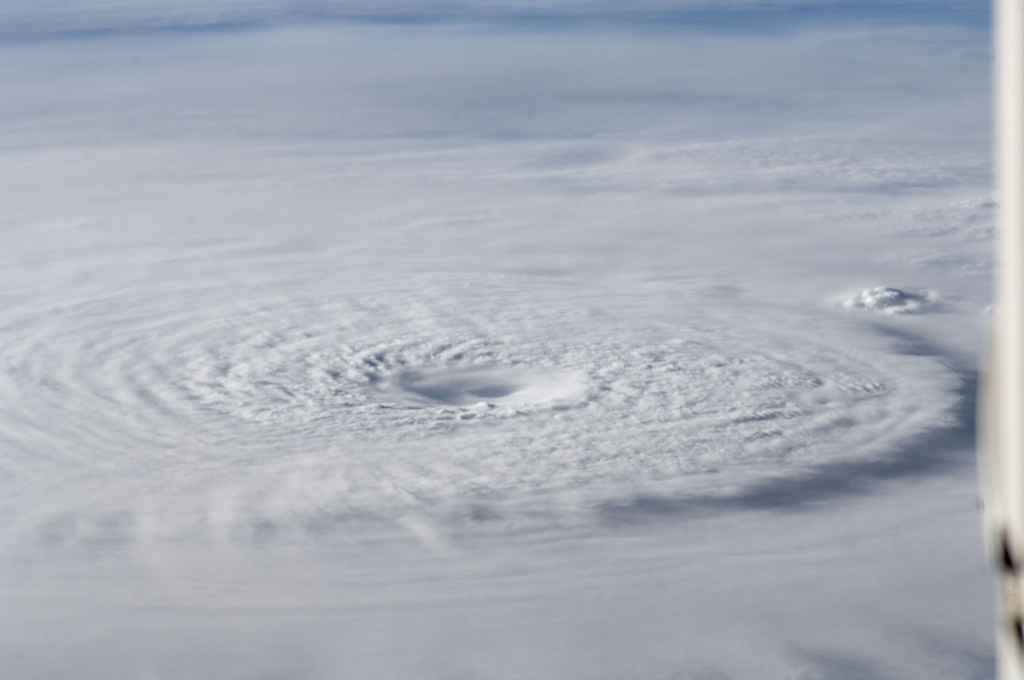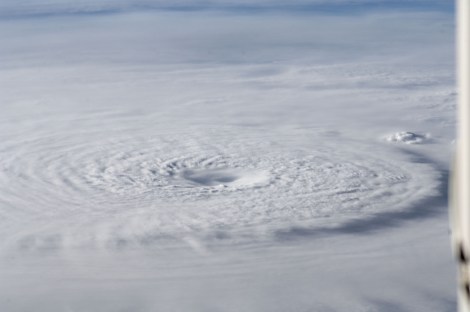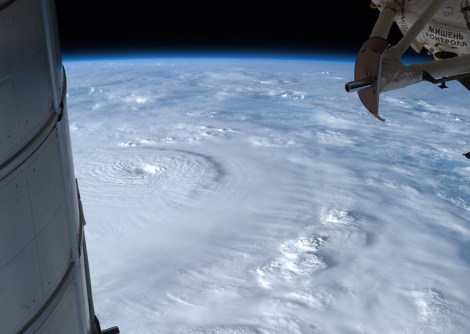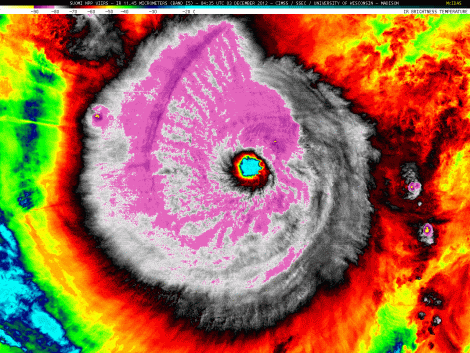This is Typhoon Bopha, as seen from the International Space Station.
That’s what it looks like from space. It’s hard to get a sense of scale from that image, so here’s another, showing it against the arc of the Earth. It extends for more than 300 miles in diameter.
More importantly, here’s what it looks like from the ground.
http://www.newslook.com/videos/520435-typhoon-rips-through-philippines
The storm, which Capital Weather Gang refers to as a “beastly super typhoon,” made landfall as the equivalent of a category 5 storm. The site explains why this storm is unusual.
The relatively compact storm is tracking at an unusually far south latitude, not far from the equator. Writes Wunderground’s Jeff Masters:
“Mindanao rarely gets hit by typhoons, since the island is too close to the Equator, and the infrastructure of Mindanao is not prepared to handle heavy typhoon rains as well as the more typhoon-prone northern islands. Bopha is potentially a catastrophic storm for Mindanao.” …
Storms this strong do not usually occur this far south because the coriolis force, which helps storms spin up, is weak at such latitudes. Bopha became a typhoon just 3.8 degrees above the equator, says the UK Met Office.
Yahoo News describes its passage over the island earlier today.
About 40 people were killed or missing in flash floods and landslides near a mining area on Mindanao, ABS-CBN television reported, saying waters and soil had swept through an army post.
A television reporter said she saw numerous bodies lined up near the army base. A military spokesman earlier said about 20 people, including six soldiers, were missing. …
But the relatively low death toll was due in part to an early evacuation. More than 155,000 people were in shelters late on Tuesday.
The storm has moved into the South China Sea, where it is expected to weaken.
This story is part of Grist’s ongoing series “Massive, unusual, deadly storms from around the globe.” The odds are good that the series will eventually become a daily feature. Maybe hourly.






